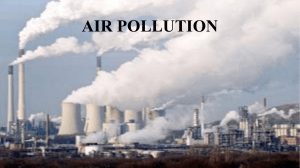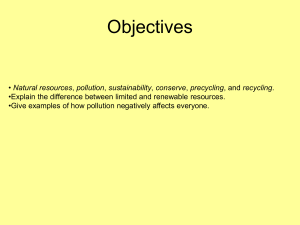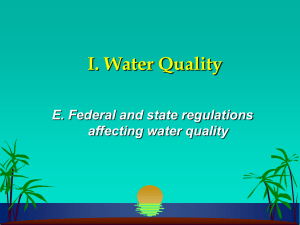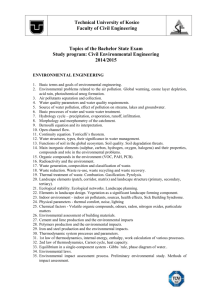Protecting Resources: Clean Water & Air Acts, Conservation
advertisement
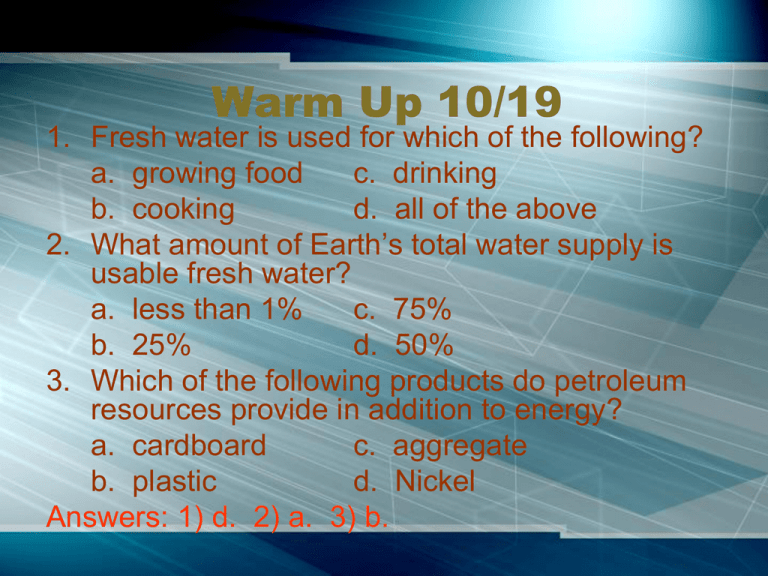
Warm Up 10/19 1. Fresh water is used for which of the following? a. growing food c. drinking b. cooking d. all of the above 2. What amount of Earth’s total water supply is usable fresh water? a. less than 1% c. 75% b. 25% d. 50% 3. Which of the following products do petroleum resources provide in addition to energy? a. cardboard c. aggregate b. plastic d. Nickel Answers: 1) d. 2) a. 3) b. Protecting Resources Chapter 4, Section 4 Keeping Water Clean and Safe • Conservation – the careful use of resources • Starting in the 1970s, the federal government passed several laws to prevent or decrease pollution and protect resources • America’s polluted rivers and lakes got early attention when the U.S. Congress passed the Clean Water Act (CWA); the percentage of surface waters safe for fishing and swimming increased from 36% to 62% from 1972 to the end of the 1990s • The Safe Water Drinking Act of 1974 helped protect drinking resources Clean Water Act Scorecard Concept Check • What did the Clean Water Act do? • Led to an increase in sewage treatment plants; it requires industries to reduce or eliminate point source pollution into surface waters Protecting the Air • In 1970, Congress passed the Clean Air Act, the nation’s most important air pollution law • It established National Ambient Air Quality Standards (NAAQs) for six “criteria” pollutants known to cause health problems—carbon monoxide, ozone, lead, sulfur dioxide, nitrogen oxides, and particulates (fine particles) • Between 1970 and 2001, the emissions of the six criteria pollutants regulated under the Clean Air Act decreased 24% • Energy conservation is an important air pollution control strategy Air Sampler Concept Check • What did the Clean Air Act do? • Established six criteria pollutants and required communities to not exceed certain levels of pollution for these pollutants Caring for Land Resources • Protecting land resources involves preventing pollution and managing land resources wisely • Farmers now use many soil conservation practices to prevent the loss of topsoil and preserve soil fertility • Selective cutting conserves forest resources • Some farmers and gardeners now use less pesticides and inorganic fertilizers to decrease chemicals in soil and on crops • Compost – partly decomposed organic material that is used as fertilizer • Recycling – the collecting and processing of used items so they can be made into new products Recycling Assignment • Read Ch. 4, Sect. 4 (pg. 113-116) • Do Section 4.4 Assessment #1-7 (pg. 116) • Study for Unit Test (chapters 1-4) Next Tuesday/Wednesday!


